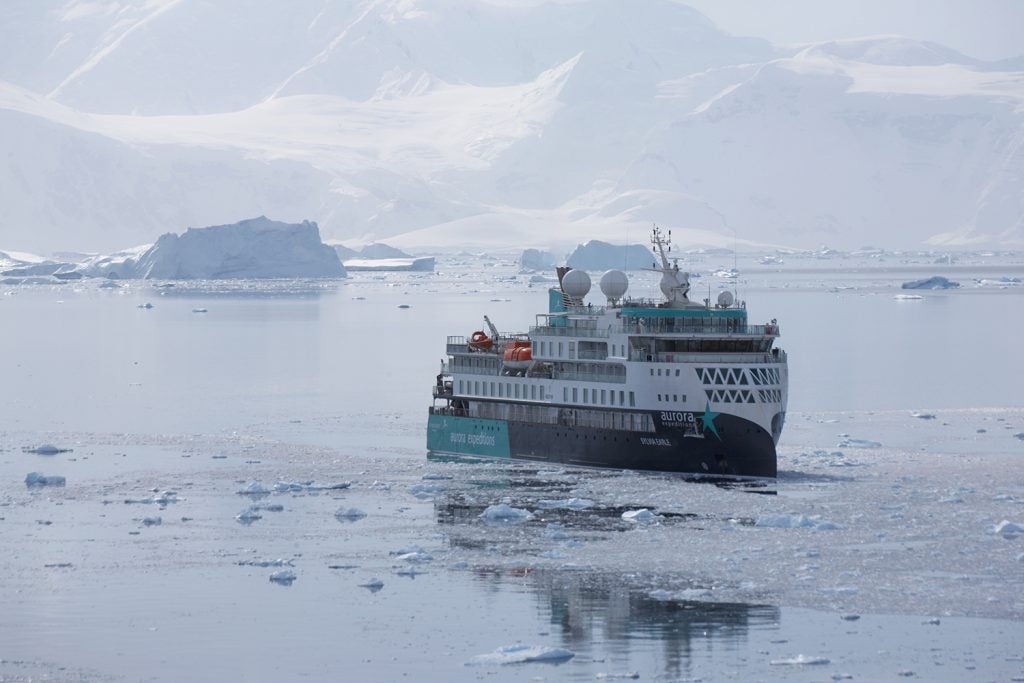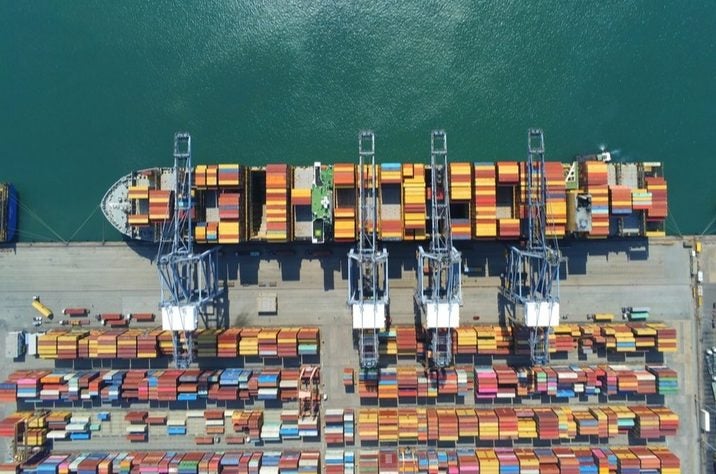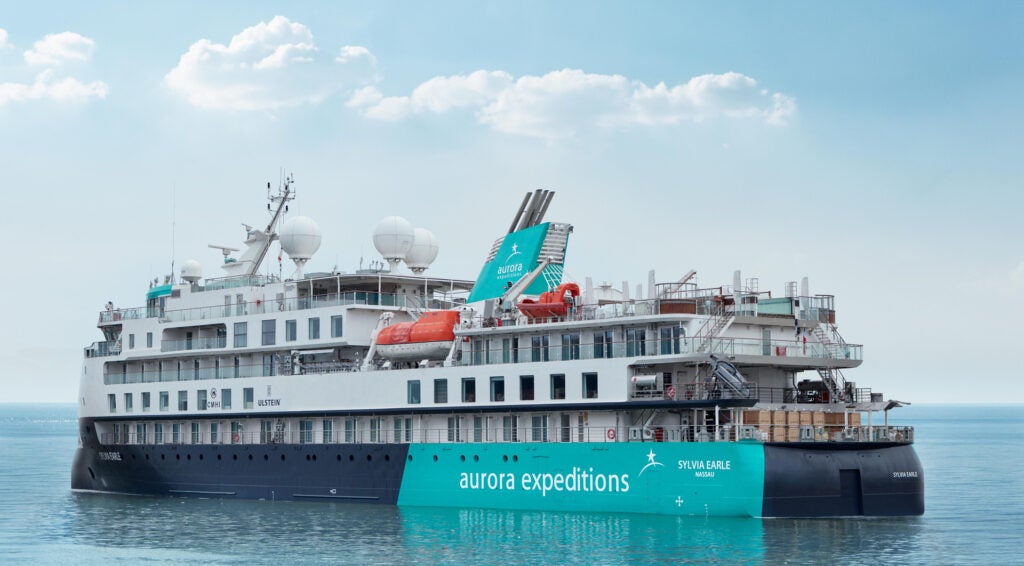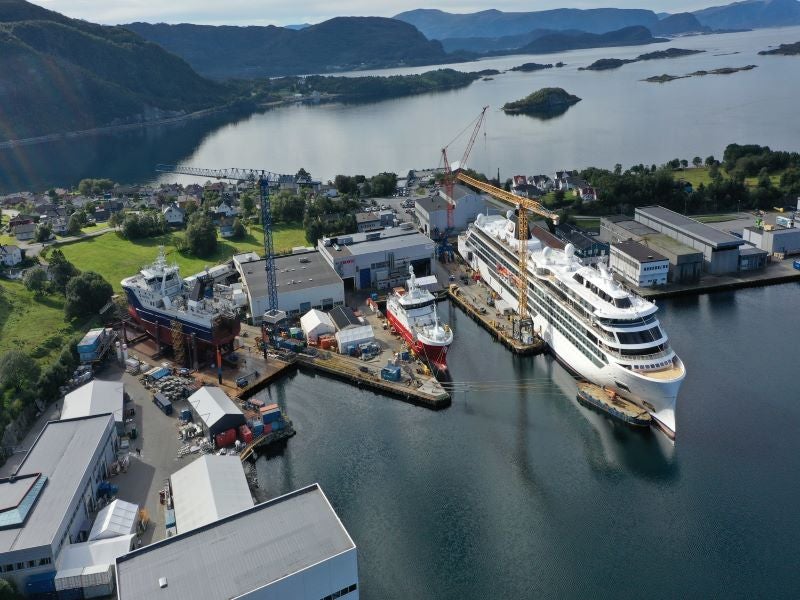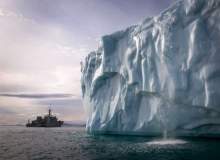

“This is a very grim part of the Arctic,” John Geiger, head of the Royal Canadian Geographic Society, told The Telegraph in September 2014, after a massive multilateral project made a historic discovery – the submerged remains of HMS Erebus, one of two British Royal Navy ships dispatched in 1845 to find a way through the fabled Northwest Passage, the frigid sea route that links the Atlantic and Pacific oceans via Arctic waters often covered with a thick, impassable crust of ice.
If Queen Maud Gulf, the expanse of water just south of the Victoria Strait where the ship was finally found, is bleak to modern eyes, one can only imagine the desolation faced by Sir John Franklin and the crews of HMS Erebus and HMS Terror when the ships became irretrievably trapped in ice off King William Island in 1846.
The death of Franklin and the long, lonely demise of the ships’ crews in the following years has prompted countless morbid theories and search expeditions, but until now the mystery has remained intact, a cautionary tale of human vulnerability in the far-flung corners of the world.
The Franklin discovery: a Canadian triumph
With the discovery of HMS Erebus just 11 metres under the water’s surface in Queen Maud Gulf on 9 September this year, a massive spotlight is being shone on one of the most enduring mysteries in maritime history. In part, the discovery has been made possible by the effects of climate change, as thinning Arctic ice continues to reduce the difficulty and risk involved in navigating the Northwest Passage, leading to speculation that it is becoming increasingly viable as a sea route for commercial shipping.
Beyond the fundamental changes in conditions for Arctic navigation, however, the discovery of the Erebus marks an unalloyed triumph for Canada, a country that holds the Franklin expedition as an important part of its northern identity. “[The Franklin expedition] is also a key moment in our country’s history,” wrote Canadian Prime Minister Stephen Harper, who strongly backed the 2014 search mission, in a September editorial for The Globe and Mail. “With 40% of our landmass in the North, and more than 160,000km of Arctic coastline, Canada is a Northern country.”
How well do you really know your competitors?
Access the most comprehensive Company Profiles on the market, powered by GlobalData. Save hours of research. Gain competitive edge.

Thank you!
Your download email will arrive shortly
Not ready to buy yet? Download a free sample
We are confident about the unique quality of our Company Profiles. However, we want you to make the most beneficial decision for your business, so we offer a free sample that you can download by submitting the below form
By GlobalDataIt’s not only through culture and identity that Canada lays claim to the discovery of HMS Erebus – the 2014 search mission that yielded the historical find was a Canadian affair from end to end, wholly endorsed by the Prime Minister and carried out with the co-operation of diverse players including public heritage agency Parks Canada, the Royal Canadian Navy (RCN), Defence Research and Development Canada (DRDC), the Royal Canadian Geographic Society and a host of other contributors, including wealthy philanthropists and private companies.
“The story of the North is the story of Canada,” Harper said during his October 2013 Throne Speech, demonstrating a stronger commitment to solving the Franklin mystery. “In order to tell that story for Canada’s 150th year, our government will continue efforts to solve one of the most enduring mysteries of our past. We will work with renewed determination and an expanded team of partners to discover the fate of Sir John Franklin’s lost Arctic expedition.”

Mystery-busting vessels and tech
The wide-ranging partnership involved in the 2014 Victoria Strait expedition to locate the remains of the Franklin expedition brought with it an impressive array of vessels, underwater survey technologies and remotely operated vehicles (ROVs) to accomplish the task. In the end, a happy twist of fate played as large a part as any ship or device – unusually heavy ice floes forced the major focus of the mission to shift south from the Victoria Strait to Queen Maud Gulf, where the discovery was made. Nevertheless, without the significant technical wherewithal at the disposal of the project partners, it’s unlikely they would have been able to capitalise on their good fortune.
The first step was the acquisition of a dedicated search vessel, a 19m adapted fishing trawler, which was purchased and retrofitted for Arctic operations by BlackBerry co-founder and Arctic enthusiast Jim Balsillie. The ship was crewed by the Canadian Navy after a chance meeting between Balsillie and Rear Admiral John Newton at a 2013 gala dinner. Thanks to the agreement hashed out between them, navy personnel were manning the ship later that year.
Further support from the navy would come in the form of the 55m patrol ship HMCS Kingston, which joined the mission a year later, armed with the Arctic Explorer, a sophisticated autonomous underwater vehicle (AUV) built by British Columbia-based company International Submarine Engineering and capable of automatically scanning the seabed for long periods of time using high-tech sonar before returning to its base vessel.
Changing Arctic Sea ice conditions will open new shipping routes through the North Polar region.
But while the Arctic Explorer was searching waters further north in the Victoria Strait, it was the Parks Agency research vessel Investigator – appropriately named after one of the first Royal Navy ships dispatched to search for the Franklin expedition in 1848, only to be abandoned after also getting trapped in ice – that made the crucial discovery in Queen Maud Gulf. The Investigator towed behind it the Klein System 3000 towed side-scan sonar device, which captured the first sonar images of the Erebus.
Other ships and technologies also contributed to the discovery in important ways. A ground-based Lidar system lent by Professor Brooke Milne of the University of Manitoba led to the discovery of pieces of a wooden deck plug from the Erebus, a key part of the breadcrumb trail of clues narrowing down the whereabouts of the sunken ship. And after the initial discovery was made, it was a Falcon Seaeye ROV piloted by Parks Canada senior underwater archaeologist Ryan Harris that provided the first real-time images of the ship since it was last spotted floating on an ice floe by the Inuit more than 160 years ago.
The Franklin find and Canadian sovereignty
Stephen Harper’s frequent referencing of Canada’s northern heritage and his citing the Franklin expedition as a key part of the Canadian story carries significance beyond simple national pride. As far as the Canadian Government is concerned, the discovery of the Franklin ship, in Harper’s words, “by Canadians, using Canadian technology”, is another reflection of Canada’s sovereignty over large stretches of the Northwest Passage. “We have discovered artifacts that shed new light on the search for the Northwest Passage,” he wrote in September. “In doing so, we have strengthened Canadian sovereignty in the North.”
This territorial claim has been a bone of contention internationally, especially with the US, which believes the Northwest Passage to be international waters, meaning foreign maritime nations would not need to ask permission to access the region. There have been several diplomatic incidents between the two countries over sovereignty in the last three decades, usually involving American vessels operating in the area without Canadian permission. Throughout, Canada has stuck to the position that it will enforce its territorial claim to the Northwest Passage (or Canadian Internal Waters, as the Canadian military now refers to the region).
“Canada has a choice when it comes to defending our sovereignty over the Arctic. We either use it or lose it,” said Harper in a 2007 announcement concerning the construction of new Arctic patrol ships and the establishment of a deepwater port in the far north. “Make no mistake, this government intends to use it. Because Canada’s Arctic is central to our national identity as a northern nation. It is part of our history. And it represents the tremendous potential of our future.”
‘Tremendous potential’ is the operative phrase. If the dispute was simply about symbolic ownership and cultural identity, there would surely be less heat in the diplomatic manoeuvring between the US and Canada over the Northwest Passage. But as Arctic ice continues to recede year by year, the region is attracting interest as a lucrative new summer shipping route, allowing huge supertankers and container ships that are too big to use the Panama Canal a much faster route between the Atlantic and Pacific oceans.
Canadian control over the area would bring with it the right to grant or deny permission for commercial shipping, not to mention policing access to future oil and gas operations in the Arctic, which are beginning to take shape even now. The Franklin discovery is unlikely to tip the sovereignty scale on its own, but it does lend cultural and historical ammunition to Canada’s ongoing case for control over the Northwest Passage. After all, it was Canadian collaboration, technology and Arctic expertise that finally brought the Erebus, trapped in darkness for so many decades, back into the light.



